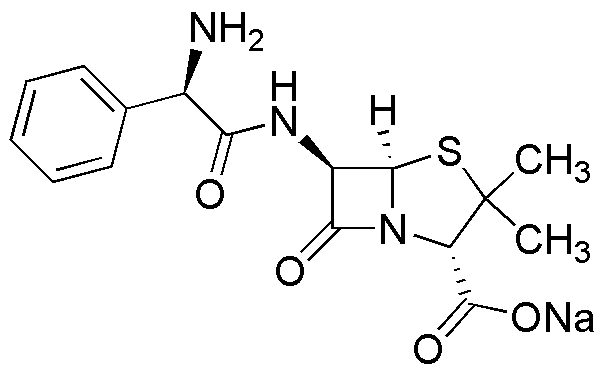Ampicillin sodium salt is widely utilized in research focused on:
- Antibiotic Therapy: This compound is a key player in treating bacterial infections, particularly in hospitals, where it is used to combat infections caused by susceptible strains of bacteria.
- Pharmaceutical Development: Researchers use it in the development of new antibiotics, testing its efficacy against resistant bacterial strains, which helps in creating better treatment options.
- Clinical Diagnostics: It is employed in laboratory settings to assess bacterial susceptibility, aiding in the accurate diagnosis and treatment of infections.
- Veterinary Medicine: Ampicillin sodium salt is also used in veterinary applications to treat infections in animals, ensuring their health and well-being.
- Food Safety Testing: In the food industry, it is utilized in testing for bacterial contamination, helping to ensure food products are safe for consumption.
General Information
Properties
Safety and Regulations
Applications
Ampicillin sodium salt is widely utilized in research focused on:
- Antibiotic Therapy: This compound is a key player in treating bacterial infections, particularly in hospitals, where it is used to combat infections caused by susceptible strains of bacteria.
- Pharmaceutical Development: Researchers use it in the development of new antibiotics, testing its efficacy against resistant bacterial strains, which helps in creating better treatment options.
- Clinical Diagnostics: It is employed in laboratory settings to assess bacterial susceptibility, aiding in the accurate diagnosis and treatment of infections.
- Veterinary Medicine: Ampicillin sodium salt is also used in veterinary applications to treat infections in animals, ensuring their health and well-being.
- Food Safety Testing: In the food industry, it is utilized in testing for bacterial contamination, helping to ensure food products are safe for consumption.
Documents
Safety Data Sheets (SDS)
The SDS provides comprehensive safety information on handling, storage, and disposal of the product.
Product Specification (PS)
The PS provides a comprehensive breakdown of the product’s properties, including chemical composition, physical state, purity, and storage requirements. It also details acceptable quality ranges and the product's intended applications.
Certificates of Analysis (COA)
Search for Certificates of Analysis (COA) by entering the products Lot Number. Lot and Batch Numbers can be found on a product’s label following the words ‘Lot’ or ‘Batch’.
*Catalog Number
*Lot Number
Certificates Of Origin (COO)
This COO confirms the country where the product was manufactured, and also details the materials and components used in it and whether it is derived from natural, synthetic, or other specific sources. This certificate may be required for customs, trade, and regulatory compliance.
*Catalog Number
*Lot Number
Safety Data Sheets (SDS)
The SDS provides comprehensive safety information on handling, storage, and disposal of the product.
DownloadProduct Specification (PS)
The PS provides a comprehensive breakdown of the product’s properties, including chemical composition, physical state, purity, and storage requirements. It also details acceptable quality ranges and the product's intended applications.
DownloadCertificates of Analysis (COA)
Search for Certificates of Analysis (COA) by entering the products Lot Number. Lot and Batch Numbers can be found on a product’s label following the words ‘Lot’ or ‘Batch’.
*Catalog Number
*Lot Number
Certificates Of Origin (COO)
This COO confirms the country where the product was manufactured, and also details the materials and components used in it and whether it is derived from natural, synthetic, or other specific sources. This certificate may be required for customs, trade, and regulatory compliance.


